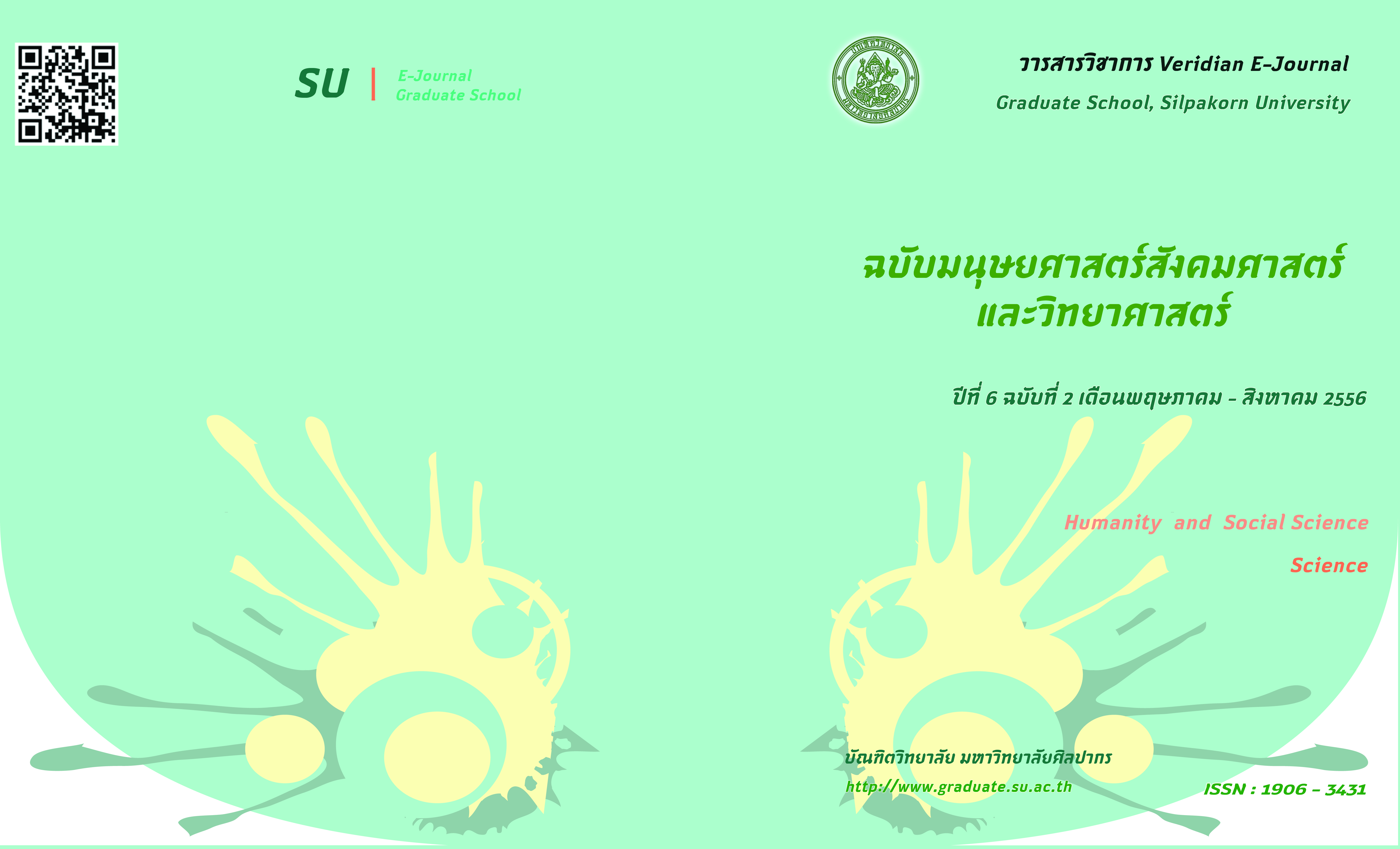ยุทธศาสตร์เชิงรุกเพื่อพัฒนาคุณภาพการบริหารของมหาวิทยาลัยราชภัฏ
Main Article Content
Abstract
บทคัดย่อ
งานวิจัยนี้มีวัตถุประสงค์เพื่อทราบ 1. องค์ประกอบของยุทธศาสตร์เชิงรุกเพื่อพัฒนาคุณภาพการบริหารของมหาวิทยาลัยราชภัฏ 2. รูปแบบของยุทธศาสตร์เชิงรุกเพื่อพัฒนาคุณภาพการบริหารของมหาวิทยาลัยราชภัฏ และ 3. เพื่อยืนยันรูปแบบของยุทธศาสตร์เชิงรุกเพื่อพัฒนาคุณภาพการบริหารของมหาวิทยาลัยราชภัฏ กลุ่มตัวอย่างประกอบด้วยมหาวิทยาลัยราชภัฏ จำนวน 15 แห่ง โดยมีผู้ให้ข้อมูล 300 คน ประกอบด้วยอธิการบดี รองอธิบดี คณบดี หัวหน้าภาควิชา อาจารย์ เครื่องมือที่ใช้ในการวิจัย เป็นแบบสัมภาษณ์กึ่งโครงสร้าง และแบบสอบถามความคิดเห็น สถิติที่ใช้ในการวิเคราะห์ข้อมูล ได้แก่ ความถี่ ร้อยละ ค่ามัชฌิมเลขคณิต ส่วนเบี่ยงเบนมาตรฐาน การวิเคราะห์องค์ประกอบ การวิเคราะห์เส้นทาง และการวิเคราะห์เนื้อหา
ผลงานวิจัยพบว่า
1. องค์ประกอบของยุทธศาสตร์เชิงรุกเพื่อพัฒนาคุณภาพการบริหารของมหาวิทยาลัยราชภัฏ มีอยู่ 5 องค์ประกอบ ได้แก่ 1) การกำหนดยุทธศาสตร์ 2) การสร้างบรรยากาศที่ดี 3) การสื่อสารที่มีประสิทธิภาพ 4) เกณฑ์การประเมิน และ 5) การสร้างระบบสารสนเทศ ตามลำดับ
2. รูปแบบของยุทธศาสตร์เชิงรุกเพื่อพัฒนาคุณภาพการบริหารของมหาวิทยาลัยราชภัฏ ได้แก่ การกำหนดยุทธศาสตร์ เป็นอันดับแรก รองลงมาคือ การสร้างบรรยากาศที่ดี การสร้างระบบสารสนเทศ และเกณฑ์การประเมิน มีค่าน้ำหนักของความแปรปรวนเท่ากับ .55, .49 และ .38 ตามลำดับ ในการสร้างยุทธศาสตร์เชิงรุกของมหาวิทยาลัยราชภัฏ อีกทั้งการสร้างบรรยากาศที่ดี และการสื่อสารที่มีประสิทธิภาพมีอิทธิพลทั้งทางตรงและทางอ้อมต่อการสร้างระบบสารสนเทศ มีค่าน้ำหนักของความแปรปรวนเท่ากับ .97, .26 และ .25 ตามลำดับ
3. การยืนยันรูปแบบของยุทธศาสตร์เชิงรุกเพื่อพัฒนาคุณภาพการบริหารของมหาวิทยาลัยราชภัฏ พบว่า ผู้เชี่ยวชาญแสดงความคิดเห็นและยืนยันรูปแบบยุทธศาสตร์เชิงรุกการบริหารของมหาวิทยาลัยราชภัฏ ในภาพรวมมีความเหมาะสม มีความเป็นไปได้ มีความถูกต้อง และการใช้ประโยชน์ ในระดับมากที่สุด ส่วนในรายด้านการกำหนดยุทธศาสตร์ การสร้างบรรยากาศที่ดี การสื่อสารที่มีประสิทธิภาพ เกณฑ์การประเมิน และการสร้างระบบสารสนเทศ มีความเป็นไปได้ กับความถูกต้อง ในระดับมากที่สุดทุกด้าน
Abstract
The purposes of this research were: 1) to study the proactive strategy factors for management quality of Rajabhat University, 2) to study the proactive strategy model for management quality of Rajabhat University, and 3) to confirm the proactive strategy model for management quality of Rajabhat University. This research was the descriptive approach. The samples were taken from 15 Rajabhat Universities by cluster random sampling. The respondents were president, vice-president, dean, faculty head and instruct professors totally 300 respondents. The instrument for collecting the data were semi-structure interview and an opinionnaire. The statistical analysis were frequencies, percentage, arithmetic mean, factor analysis, and content analysis.
The results were as follows:
1. The factors of the proactive strategy factors for management quality of Rajabhat University, were 5 factors: systematic strategic determination, good climate creation, efficient communication, criterion assessment and information system creation.
2. The proactive strategy model for management quality of Rajabhat University, was firstly systematic strategic determination, followed by good climate creation, information system creation and criterion assessment, variance value equal to .55, .49 and .38 respectively, in the proactive strategy creation for management quality of Rajabhat University; in addition, good climate creation and efficient communication were directly and indirectly influence to information system creation, variance value equal to .97, .26 and .25 respectively.
3. The confirmation to the proactive strategy model for management quality of Rajabhat University, was found that the experts expressed their opinions and confirmed to this strategic model for management quality of Rajabhat University, was the most highest level in overall view, having suitability, feasibility, correctness and advantages, but for details, systematic strategic determination, good climate creation, efficient communication, criterion assessment and information system creation, having feasibility and correctness were at the most highest level in all aspects.
